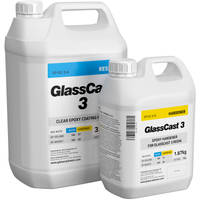Need any help or advice?+44 (0)1782 454499
Downloads (1)
| Resin Plank Table Handbook |
PRODUCTS USED IN THIS PROJECT
Although not necessarily an exhaustive list, the following tools and materials, supplied by Easy Composites, were used in this project.
The quantity shown below is the approximate amount used in the project rounded up to the nearest available kit size or quantity.
MATERIALS & CONSUMABLES

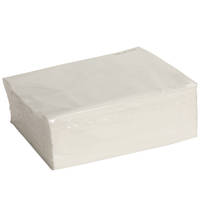
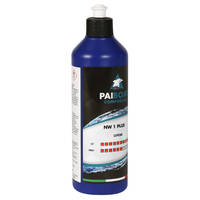
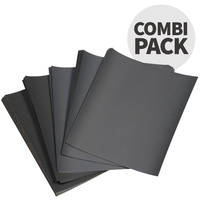
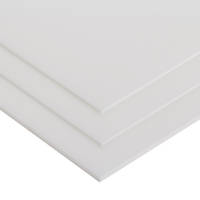
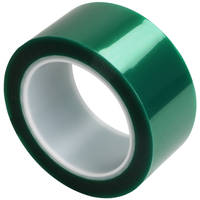
TOOLS & EQUIPMENT
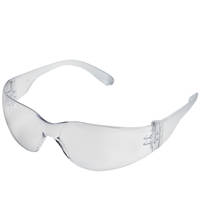

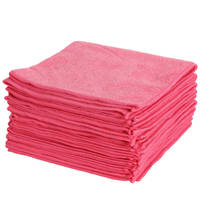

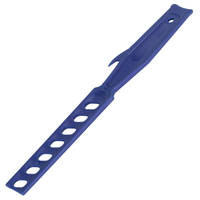
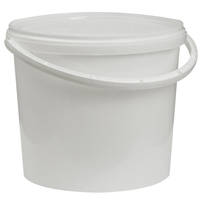
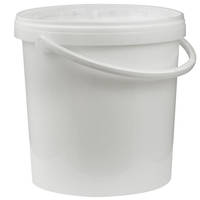
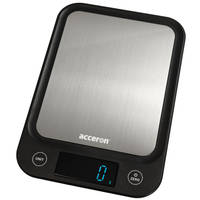
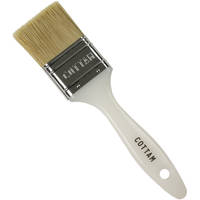
VIDEO TUTORIAL
How to Make a Resin Plank Table
Download our free eBook 'The How to Make a Resin Plank Table Handbook'
GlassCast® 3 is an epoxy coating resin from the creators of the famous original GlassCast® product used in Penny Floor projects all over the world. GlassCast 3 is perfect for projects like this Resin Plank Table. It's special formulation makes it the ideal product for use with wood - like the amazing penny floors, bottle cap table tops, bar tops and many more furniture projects.
This step by step guide - consisting of the tutorial video and the free downloadable eBook will provide you with all the information you could ever need for making your own resin plank table, including planning, pouring, finishing and caring for your table. It also includes handy pointers and best-practise tips. Here are the steps in brief:
TUTORIAL BREAKDOWN
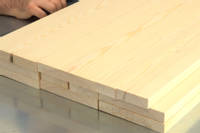
1. Before you begin
To start your DIY resin plank table project you will need to choose your wood, it needs to be as dry and flat as possible, if you are looking for clean crisp lines like we were then basic timber planks are ideal for this type of project, however this will depend on your personal taste. It helps if the wood is dry, flat and as straight as possible and you may need to prepare the size and lengths to give a mixture of widths and lengths in your planks. You will need to have access to a few basic tools and materials and it is very important that you work in controlled workshop conditions to achieve optimum results - a dry heated workshop and room temperature of around 20°C is ideal. It's also really important to ensure that the GlassCast® 3 is at this temperature throughout the working and curing time.
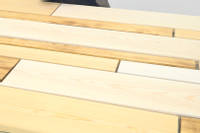
2. Preparing the wood
For this resin plank table the step by step guide assumes that the wood has been cut down into various sized planks and when laid out in a pattern creates an accurate rectangle.
Some of the planks can be made lighter or darker to add interest to the table. Some planks can be easily lightened using a water based wood dye and the some planks darkened using a blow torch gently passed over the surface of the wood to darken and bring out the grain.
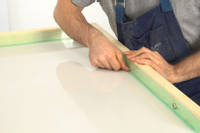
3. Setting up the baseboard and barriers
We used polypropylene sheet as the base board secured to an oversized piece of chipboard, it's important to use a material which the epoxy resin won't stick to. The polypropylene sheet will give a great surface finish and can be used many times. You will then need to add and secure the side barriers. We used timber batons and sealed them with release tape which epoxy resin also won't stick to. You can overhang the tape and fold it back to create a hinge with the tape which will allow you to seal it to the base. Then seal the corners and check the mould box is water tight.
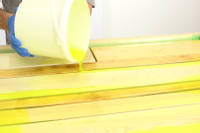
4. Preparing and pouring the resin
We recommend that you measure or weigh out the GlassCast® 3 resin (Part A) for the entire project if you are adding a colour - and pigment it all as a whole. This will ensure a consistent colour throughout the project. In the tutorial we added the yellow pigment - at a ratio of 50g of pigment per 15kg of GlassCast to give a translucent tint. Thoroughly mix the pigment into the resin making sure you scrape the sides and bottom of the bucket.
For this project we split the resin pours into 4 stages for the different steps in the project. For each resin stage pour out the relevant amount of pre-coloured resin and the correct amount of hardener and mix thoroughly before transferring to a second container and mixing again (this is also known as 'double-potting'). Then the following pours will be made:
- Stage 1 - The Base Layer
- Stage 2 - The Sealing Layer
- Stage 3 - The Fill Layer
- Stage 4 - The Surface Layer
After each pour the resin must be allowed to reach the B-stage - this means that the resin has partially cured and started to become firm when touching the surface (with a gloved finger) you can make a mark but no resin sticks to your finger. Pouring on top of the layer below at it's B-stage will ensure a strong chemical bond - as though the pour was done as a single pour.
If you allow the resin to cure past the B-stage you will need to key the surface with abrasive paper before pouring the next layer.
Breaking down the pours in to the 4 stages i the most important advice we can offer - it will completely seal all the faces of the wood and minimise air entrapment. When the 4th surface has been poured leave it to cure to the B-stage under cover to stop any dirt of dust coming to rest on the resin.
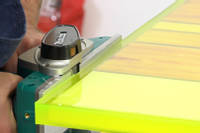
5. Finishing the surface
Once the 4th stage is fully cured, remove the barriers and using a planer remove the resin meniscus on all edges.
The surface is finished as poured, so only the sides require a little bit of work to bring them up to the same hi-gloss as the table top.
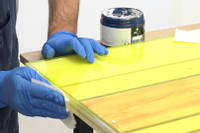
6. Flatting and polishing
Wet sand the edges starting with a 240 grit paper over a block and work through the finer grits (400, 800 and 1200) making sure that you change the water between grits and ensure that all scratches are removed before changing grits. Then using a fast cutting polishing compound, polish the edges. You will achieve a hi-gloss shine in a relatively short time.
Then fit your chosen table legs according to the manufacturers instructions.
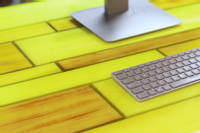
7. After-care
Tips to care for and prolong the stunning appearance of your resin plank table include:
- Not placing hot objects directly onto the surface, make sure you use heat proof mats.
- GlassCast® 3 has been designed to have the best UV stability of any epoxy resin on the market and will withstand years of indirect sunlight, but should be kept away from direct exposure to UV light.
- Repairing scratches and marks - by repeating the finishing and polishing steps it is possible to restore the surface to a high-gloss finish if it is damaged.
If you are interested in learning more about the product and alternative ideas go the GlassCast® 3 product page.
DISCUSSION (7)
Please share any questions or comments you may have about this video tutorial.
LEAVE A COMMENT OR QUESTION
PRODUCTS USED IN THIS PROJECT
Although not necessarily an exhaustive list, the following tools and materials, supplied by Easy Composites, were used in this project.
The quantity shown below is the approximate amount used in the project rounded up to the nearest available kit size or quantity.
MATERIALS & CONSUMABLES






TOOLS & EQUIPMENT









Downloads (1)
| Resin Plank Table Handbook |
DISCUSSION (7)
Please share any questions or comments you may have about this video tutorial.
LEAVE A COMMENT OR QUESTION
100% SECURE
PAYMENT METHODS


Easy Composites Ltd, registered in England 7486797. All content copyright (C) Easy Composites Ltd, 2025. All rights reserved.
